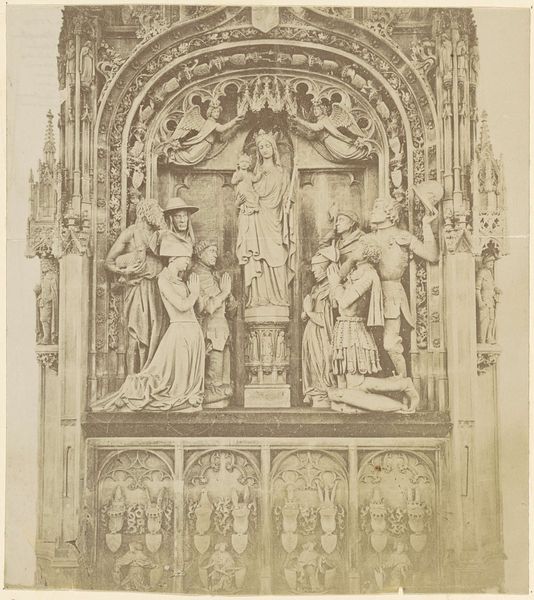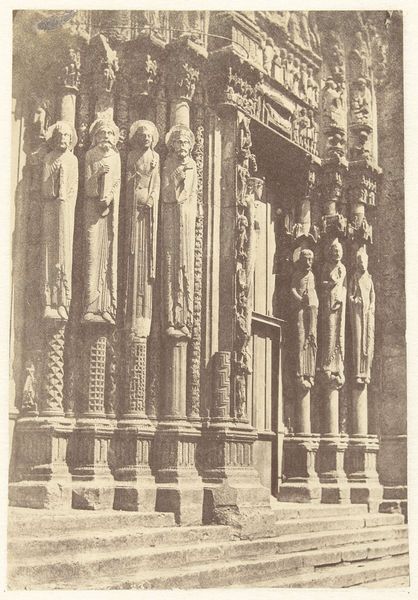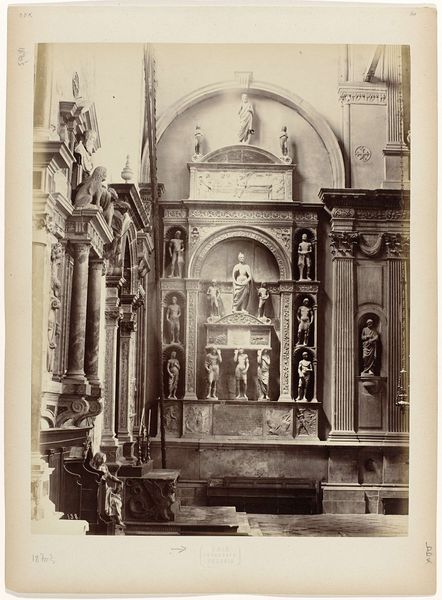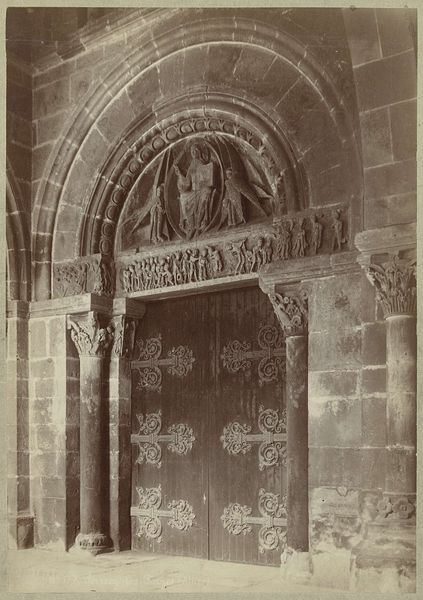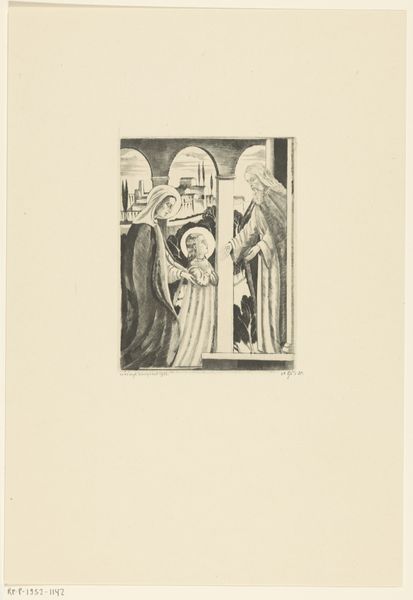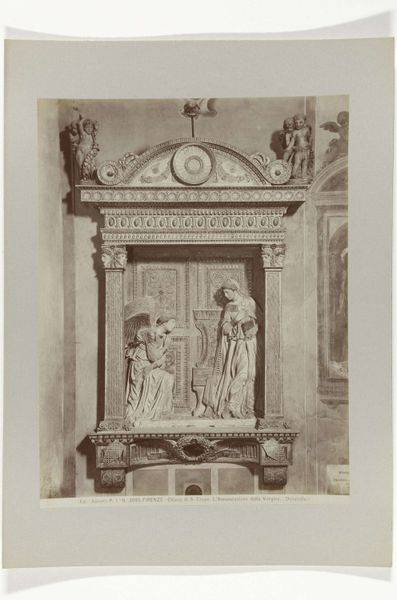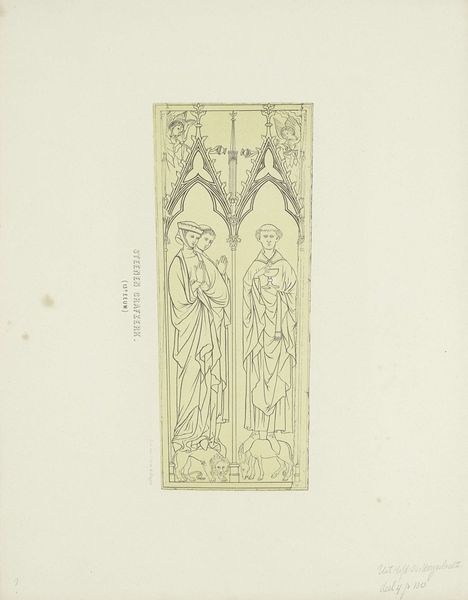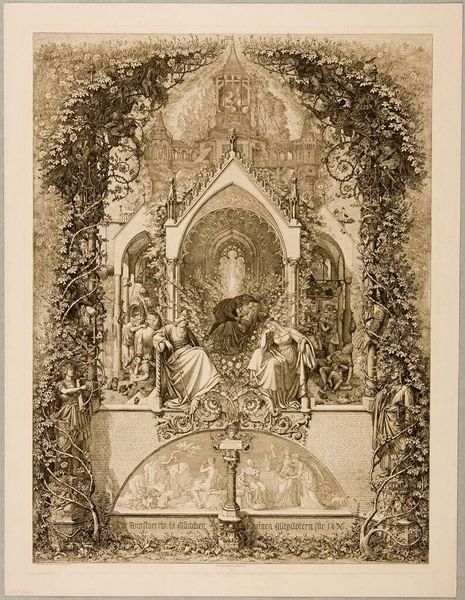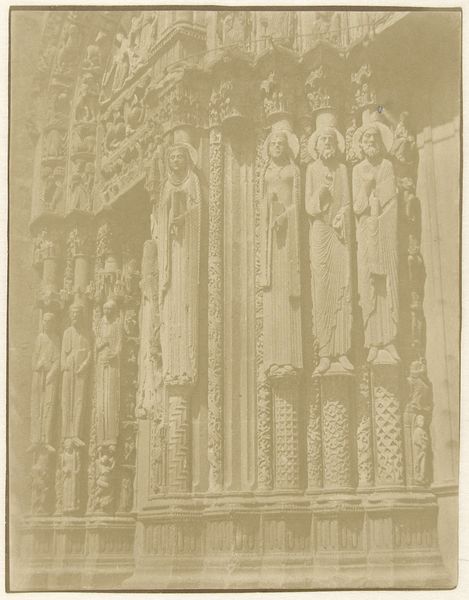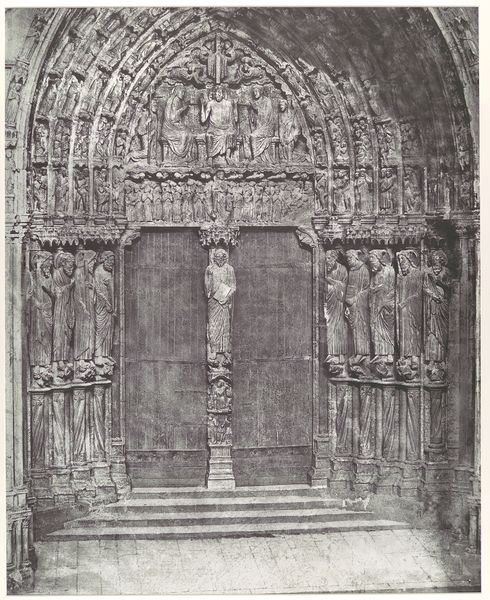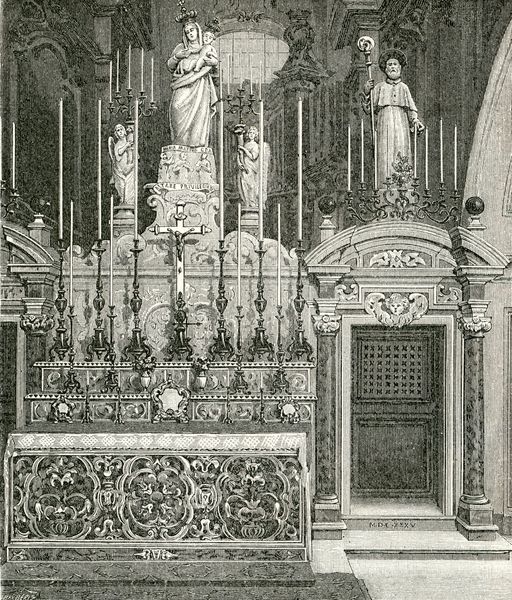
Dimensions: plate: 35.56 × 28.42 cm (14 × 11 3/16 in.) sheet: 45.09 × 35.88 cm (17 3/4 × 14 1/8 in.)
Copyright: National Gallery of Art: CC0 1.0
Curator: Here we have Walter Tittle's "The Glory that is Chartres," a print made in 1942, seemingly in charcoal and ink on paper. The carving and the architecture almost leap off the page. Editor: It's… austere. Beautiful, undeniably, but the grayscale and sharp lines give it a feeling of solemnity, almost coldness. There's a stoicism in those figures. Curator: Tittle captured something essential in Chartres – that transition between the earthly and the divine rendered in stone. The verticality, the striving upwards... you can almost hear the echoes of Gregorian chant. Editor: And see the politics embedded in every line. The church was so much more than just a religious institution; it was a centre of power, a symbol of authority. Consider the era; it would have been a dark time, particularly with its ties to war, poverty and persecution. How might this imagery and structure represent that control in a larger historical narrative? Curator: Yes, Chartres was and remains a powerful cultural and religious symbol, referencing historical traditions, particularly during times of conflict. The sculptor’s choices and their visual language would draw directly from that shared understanding of collective memory to establish that meaning. I see similar forms used even today. Editor: The robes of those figures – uniform, draping, obscuring any sense of individual form – serve to communicate status. The subtle detail is fantastic, the artist highlights that visual complexity and, in doing so, they celebrate its power and position. Curator: Precisely. These are archetypes as much as they are portraits. Note how the columns frame each figure almost like a separate reliquary. Each an idealized representation of humanity in service of something greater. Editor: Which inherently poses problems when thinking about hierarchy, exclusion, and oppression... The Glory that is Chartres speaks not only to faith, but also the problematic elements of medieval power structures, which arguably still affect us today. Curator: Perhaps the real glory then, as Tittle saw it, is the enduring power of symbols to communicate, to inspire, to challenge, even across the centuries. Editor: To remind us, that history isn't just something that's passed, it is present and powerful.
Comments
No comments
Be the first to comment and join the conversation on the ultimate creative platform.


